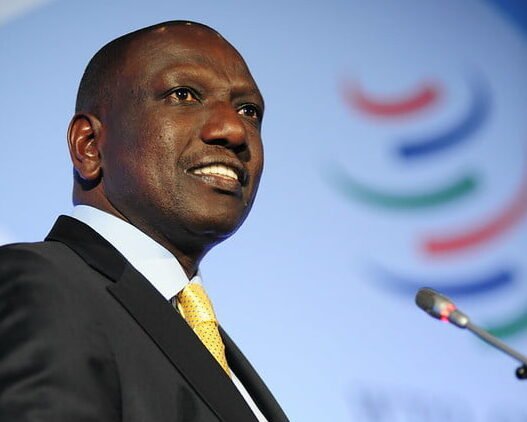President Ruto’s Bold Move to Stabilise Kenya
Kenya’s President William Ruto has announced a plan to form a new “broad-based government” following weeks of deadly anti-government protests triggered by an unpopular tax bill. The president’s initiative aims to address the unrest and steer the country towards stability and economic growth.
A Controversial Cabinet Reshuffle
In a surprising turn of events, six of the 11 ministers proposed by President Ruto in his recent address were from the cabinet he dismissed just a week prior. This reshuffle, initially described by Ruto as a response to “reflection and listening to Kenyans,” has sparked debate over the effectiveness of the proposed changes.
Among the most notable figures is Kithure Kindiki, set to resume his role as interior minister despite calls for his resignation over the police’s handling of protests. Other key appointments include Debra Mlongo Barasa for health, Julius Migos Ogamba for education, and Aden Barre Duale for defence.
Public Reaction and Opposition
The demonstrations, which resulted in over 40 deaths, began in response to proposed tax increases. Despite the government’s retraction of these proposals, the predominantly young protesters expanded their demands, eventually calling for President Ruto’s resignation. The protests also led to the resignation of Kenya’s police chief, following accusations of police brutality and arbitrary arrests.
President Ruto’s promise to craft a broad-based government that harnesses Kenya’s potential for economic transformation has been met with mixed reactions. Many Kenyans expected a completely new cabinet, younger and filled with professionals from various industries, rather than familiar faces from the old government.
Opposition Divided
Ruto’s proposal to include opposition lawmakers in his new government has also created a rift within the opposition. Raila Odinga, the former prime minister and defeated presidential candidate, reportedly supported the idea, with his Azimio coalition expected to receive seven cabinet positions. However, this plan has not been universally accepted within the opposition. Key figures like Martha Karua, Odinga’s former running mate, have refused to participate, calling for a complete overhaul of the government.
The Path Forward
As Kenya navigates this turbulent period, the proposed ministers await approval by the National Assembly. President Ruto has indicated that more names will be announced “in due course,” suggesting an ongoing effort to refine his administration. The nation’s eyes remain on the government, hoping for a resolution that addresses the underlying issues and brings stability.
List of Proposed Ministers
- Kithure Kindiki – Minister of Interior
- Debra Mlongo Barasa – Minister of Health
- Alice Wahome – Minister of Lands, Public Works, Housing, and Urban Development
- Julius Migos Ogamba – Minister of Education
- Aden Barre Duale – Minister of Defence
- Andrew Mwihia Karanja – Minister of Agriculture
- Roselinda Soipan Tuiya – Minister of Environment
- Eric Muriithi Muuga – Minister of Water, Sanitation, and Irrigation
- Davis Chirchir – Minister of Roads and Transport
- Margaret Nyambura Ndung’u – Minister of Information and Communication
- Rebecca Miano – Attorney-General
President William Ruto’s attempt to form a broad-based government is a critical move in response to Kenya’s current crisis. While the reshuffle has faced criticism and sparked controversy, it represents an effort to address the nation’s challenges and push towards economic transformation and inclusive growth. The success of this initiative hinges on the approval of the proposed ministers and the ability to unite a divided nation.




